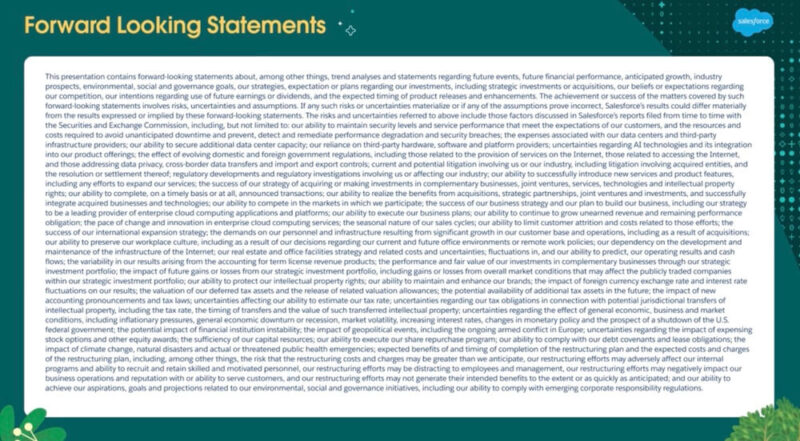3 Tactics to Turn Shoppers Into Brand Fans From Canadian Tire

Brand loyalty helps industry leaders outperform their competitors. And with the seasonal uptick in shopping activity, the holiday season is the ideal time to turn shoppers into brand fans that come back again and again.
Retail company Canadian Tire Corporation — which includes brands across the automotive, hardware, sports, leisure and housewares sectors — knows this better than most. In 2021, the company was ranked the most reputable in Canada, beating out Kellogg, Sony and Campbell in terms of brand affinity.
In our recent webinar — How to Optimize Your Holiday Readiness Strategy With Customer Data — we spoke to Canadian Tire Corporation about how it’s responding to rapid changes in the digital world and using customer data to build brand loyalty and turn buyers into raving fans. Here are the top three takeaways from that discussion.
1. Enable Customers to Shop the Way They Want
While Canadian Tire Corporation will be celebrating its 100th year in 2022, it continues to stay agile by catering to consumer preferences and behaviors — something that became even more important in the face of the COVID-19 pandemic.
“Our customers had become very accustomed to shop with us in one channel, and that was through the store,” said Greg Shelly, Vice President of Enterprise Digital Marketing at Canadian Tire Corporation. “We didn’t do curbside pickup or anything like that.”
But with lockdowns and health concerns changing how people shop, the company saw a huge spike in e-commerce. Canadian Tire Corporation began reaching out to its customers directly — across email, applications, websites and more — to stay engaged and deepen customer relationships.
As brand interactions surged across these channels, the company unified and analyzed the resulting customer data to better understand the wants and needs of shoppers throughout different parts of the country.
“That really helped us be successful,” Shelly said. “And I have to say, I think our customer data and the tools we had, to bring it together and get a pulse on the business almost overnight in a different way than we had before, I actually think that was huge for us.”
Within a week, the company’s namesake brand — Canadian Tire — launched a successful curbside pickup program.
“It’s not about pushing demand artificially into one channel or another,” Shelly said. “And so, while we have aspirations to grow in e-commerce, it should not come at the expense of the customer experience. We should not have any friction in our experiences. And we should make sure that customers are able to shop the way they want to shop.”
2. Minimize Inventory Frustration That Sinks Sales
Dependability is key to brand loyalty, which is why inventory shortages can do significant damage to customer relationships.
Research shows that, after finding an item out of stock the first time, 31% of consumers will either forgo a purchase altogether or switch to a different store. That number increases to 50% if a product is out of stock a second time, and 70% for a third stockout.
“Inventory was certainly near the top of the list [of pain points] during COVID,” Shelly said.
To prevent customer frustration, brands must not only be aware of what’s out of stock, but what will be. Using customer data to identify trends in shopping habits and forecast the behaviors of various audience segments allows brands to plan out their inventory — and how certain products will be promoted — more effectively.
But predictive analytics isn’t enough. Brands must also break down the silos that prevent their business teams from taking action on it.
“There may be dashboards in place, which is good, and the insights kind of flow through, but you’re leaving people to stitch information together by themselves,” Shelly said. “And quite often, you’re not going to have a consistent set of results, or at least a consistent set of actions, when you’re disseminating very narrow data sets.”
Canadian Tire Corporation not only prioritizes gathering insights based on customer behavior — such as what may be low on stock in the coming weeks — but ensuring they inform the orchestration of marketing campaigns.
“What you find is when that data is together, you can actually have much more productive conversations that yield a lot more fruit,” Shelly said. “So, we started to move up the maturity curve, started to personalize more … you get to that point where you’ve got the human analysis on top of these joint data sets, and get people really talking about how to optimize the experience off of that information.”
When customers are kept in the loop, they can plan their purchases ahead of time — and feel respected, which goes a long way toward turning shoppers into fans of your brand.
3. Guide Customers Deeper To Gain Repeat Buyers
The more engaged a customer is with your brand, the more likely they’ll go from one-time shopper to repeat buyer. But first you have to give them a reason to strengthen their bond, such as the benefits of a loyalty program.
“You can fortify your relationship with the consumer by returning value to them as a result of them going deeper into your ecosystem,” Shelly said.
This has the positive byproduct of helping brands build out their first-party data strategies — an essential practice in a world where third-party cookies are going away. Research showed that more than 50% of marketers are using this holiday season as a chance to beef up their customer data strategies.
“We believe in our core that it’s about establishing that first-party relationship with consumers, because we know not only is it good for the brand, but it’s good for the bottom line, too,” Shelly said.
But brands need the right tools to transform data into customer experiences. Empowering business teams to activate customer data without relying on technical professionals is key to maximizing the business value of customer insights.
“It frees up your data engineers,” Shelly said. “I should be able to have reporting in my hands, from all these different data sources, and let the engineers and those folks go do some more development work to introduce new capabilities instead of just answering questions all day.”
Check out the full webinar featuring Canadian Tire Corporation to learn more about how it’s using customer data to turn shoppers into brand fans and strategies you can apply to your own organization.
Learn More
Download the CDP Market Guide to learn how you can optimize customer experiences to drive brand loyalty throughout the holiday season and beyond.





